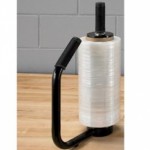Stretch film plays a critical roll in the material and handling industry. In many cases you may have overheard or even replied; “Stretch film is stretch film! Just get some in so we can ship our merchandise out the door!” Though usually taken for granted the gauge, size, and type of film you use is quite important regarding weights of the package and hold strength. It can be the difference between getting the material to it’s destination intact or receiving a rather nasty phone call from your customer regarding the condition it was received or rather not accepted. Worse yet is the added expense of paying for freight on returned items after paying for labor, packaging, and shipping. It can be a long line of expensive dominoes if you don’t have the right packaging equipment and it all starts with stretch film.

To figure out which stretch film that is best suited for your needs first you need to keep track of your most common load size. How much material are you placing on the pallet? Are the majority of your pallets uniformed in shape, for example; are they usually shipped out squared off and in the same sized boxes, stacked to maximize the load or are they irregular loads? Are you usually shipping pieced or partial pallets with many items of different sizes? Are the loads normally heavy or are they light? Do the loads consist of sharp edges? Many questions need to be answered, but rest assured your answers will result in savings and efficiency.
If you have experienced material being damaged and returned due to loads leaning or tearing while in transit there’s a very strong possibility you’re purchasing the wrong gauge or even width of stretch film. This can be fixed by educating yourself and being prepared. Knowing exactly what you need is crucial to cost effective business practices. Educating yourself on the products you purchase could save you an enormous amount of time and money.
In the upcoming weeks we will make our best attempt to educate you regarding the many differences of stretch film, film gauges, sizes, cast or blown films, hand wrapping or machine wrapping. What’s right, or better yet, more cost effective for your business. The key is to never be afraid to ask too many questions or spend a little time to do the research. It could be the difference between your shipment arriving in good shape or damaged and scattered all over the floor of your chosen freight carrier’s vehicle.
